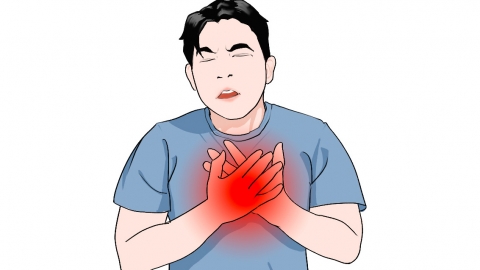What medication works best for treating chest tightness and shortness of breath?
Under normal circumstances, chest tightness and shortness of breath may be caused by vigorous exercise, emotional excitement, anemia, bronchial asthma, chronic obstructive pulmonary disease (COPD), and other factors. It is recommended to seek timely medical attention and follow a physician's guidance regarding the use of medications such as ferrous sulfate tablets, ferrous fumarate granules, montelukast sodium tablets, aminophylline sustained-release tablets, and aminophylline tablets for better therapeutic effects. A detailed explanation is as follows:

1. Vigorous Exercise
During vigorous exercise, the body's oxygen demand increases sharply. To meet this demand, the heart beats faster, and breathing deepens and quickens. If the intensity or duration of exercise is excessive, the heart and lungs may temporarily be unable to fully adapt to this sudden increase in workload, which can lead to chest tightness and shortness of breath. Medication is generally not required for treatment. It is recommended to stop exercising immediately and rest comfortably in a seated or lying position while drinking water in moderation.
2. Emotional Excitement
When a person is emotionally excited, the body secretes large amounts of stress hormones such as adrenaline and noradrenaline. These hormones accelerate heart rate, constrict blood vessels, elevate blood pressure, and stimulate the respiratory center, thereby increasing respiratory rate and causing chest tightness and shortness of breath. Treatment with medication is generally unnecessary. Individuals can attempt to relax by taking deep breaths, meditating, or listening to calming music.
3. Anemia
Anemia occurs when red blood cell production decreases, red blood cells are excessively destroyed, or blood loss occurs due to various causes, leading to a reduction in red blood cell count or hemoglobin levels below the normal range. Hemoglobin carries oxygen, and its reduction causes tissue and organ hypoxia throughout the body. To compensate for this hypoxia, the heart beats faster, resulting in chest tightness and shortness of breath. Additional symptoms may include dizziness and fatigue. Patients can follow medical advice to use medications such as ferrous sulfate tablets, ferrous fumarate granules, and vitamin B12 tablets for treatment.
4. Bronchial Asthma
Bronchial asthma is a chronic inflammatory airway disease usually caused by interactions between genetic and environmental factors. Airway inflammation can lead to airway hyperresponsiveness, and upon exposure to triggers, the airways may constrict and spasm, causing ventilation impairment and resulting in chest tightness and shortness of breath. Symptoms such as dyspnea and coughing may also occur. Patients should follow medical instructions and use medications such as montelukast sodium tablets, aminophylline sustained-release tablets, and ipratropium bromide aerosol for treatment.
5. Chronic Obstructive Pulmonary Disease (COPD)
COPD is commonly caused by long-term smoking, air pollution, occupational dust exposure, and chemical irritants. These factors may lead to chronic airway inflammation, airway narrowing and obstruction, restricted airflow into and out of the lungs, and subsequent hypoxia and carbon dioxide retention, causing the symptoms described above. Additional symptoms may include wheezing and weight loss. Patients can follow medical recommendations to use medications such as salbutamol aerosol, budesonide inhalation aerosol, and aminophylline tablets for treatment.
Maintain a regular lifestyle, avoid excessive fatigue and strenuous exercise; ensure proper ventilation in living and working environments and avoid prolonged exposure to poor environmental conditions; quit smoking, limit alcohol consumption, and reduce irritation to the heart and lungs.





